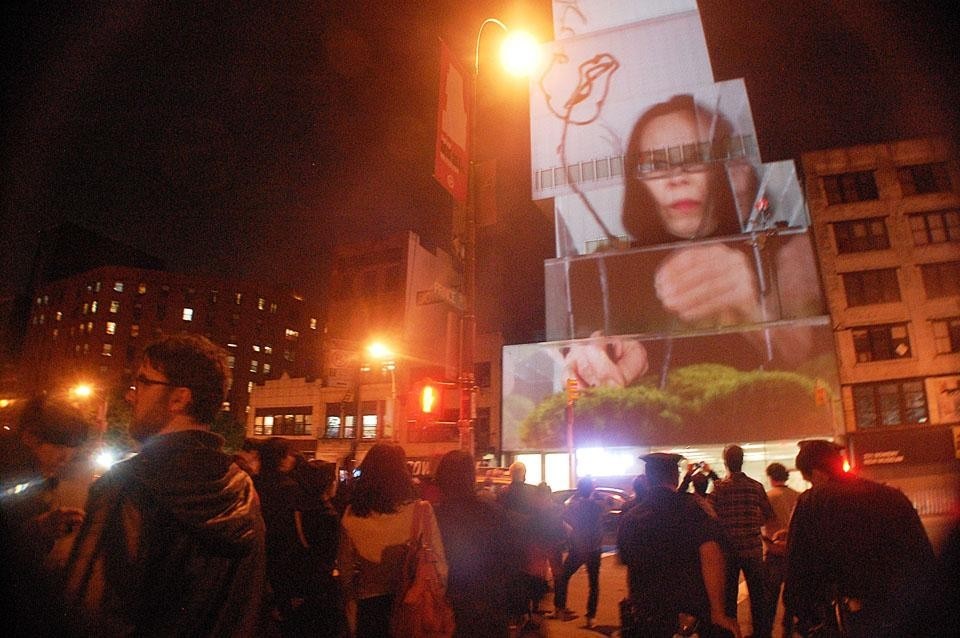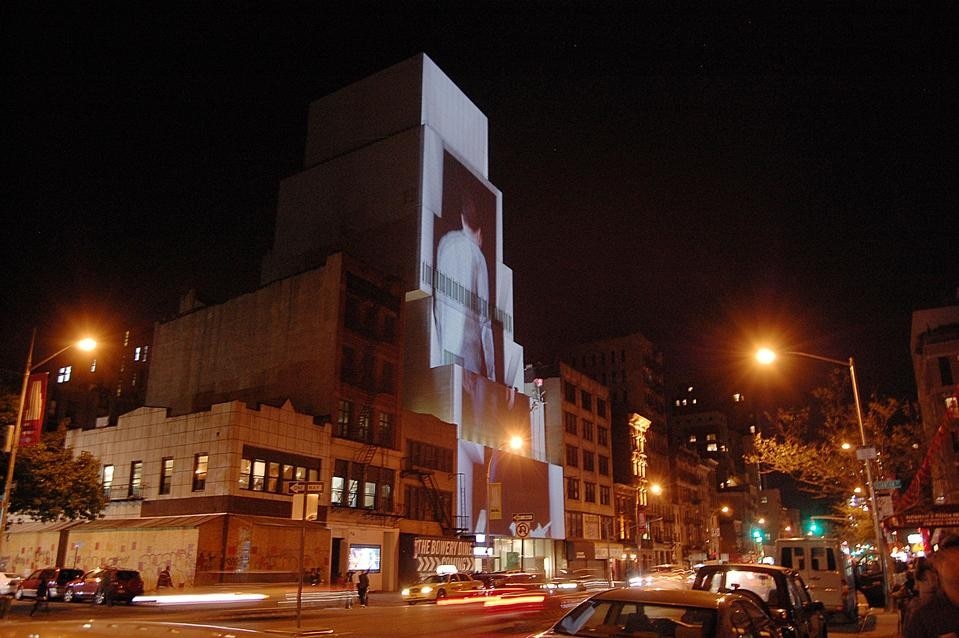Mobility was discussed in terms of self-guided vehicles, data, ecologies, dynamic surfaces, commodity flows, technological miniaturization, and camouflage, among other themes. For sociologist Saskia Sassen, a city's chief asset is its perpetual "incompleteness" and ability to continue evolving indefinitely. Therefore she encouraged "open-source urbanism" and grassroots technology. Molly Wright Steenson invoked e. e. cummings' famous line, "Progress is a comfortable disease," and condemned technologies of movement for their complicity with the circulation of capital. Artist-architect Mark Shepard similarly called for more critical practice, declaring, "the smart city is not so smart." On the other hand, David Benjamin of The Living argued that intelligent building skins and other sentient surfaces (e.g. rivers, streets, and tableware) should "offer an interface to our public, collective thinking" by collecting and then displaying data about the urban environment. Domus editor Joseph Grima framed the city as a living body of information exchange, observing that most of us remain "unaware of the city's response to who we are," from surveillance systems to mobile communications and ATM transactions. "Vast data sets already exist all around us," said Grima. His manifesto was "a low-tech strategy of subversion toward the technological manipulation of the landscape."
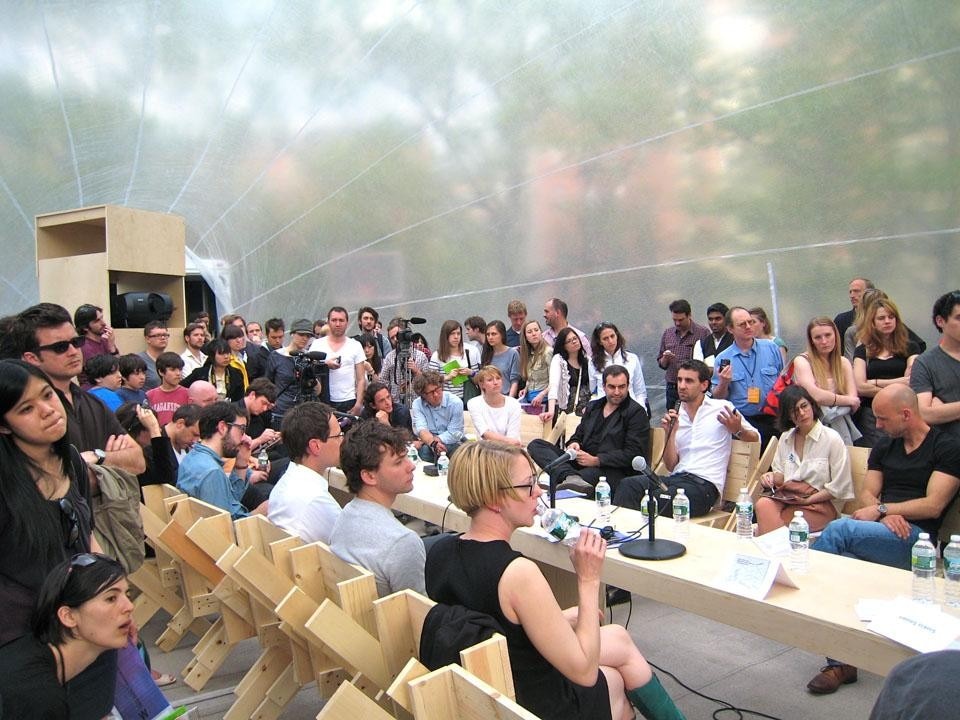
But must these intelligent controls necessarily reduce the human traveler to a totally passive role? Jürgen Mayer thinks not. In his "Poke-City" concept, the driver is cocooned inside a personalized data cockpit which allows for sensory experience as well as networked interaction with other people and the built environment itself. The windshield begins to behave like a touchscreen as well as a window. With traffic signals obsolete, Mayer would "give the street back to people and architecture." Architect and designer Mitchell Joachim of Terreform One reviewed his computer-guided "soft car" concept which combines cushy materials with social flocking behaviors. And the seemingly pragmatic solution of car sharing was promoted by sound designer (and Domus Mixtape curator) Daniel Perlin and Annegret Maier. Perlin linked cars with "clouds"—not only in terms of atmospheric gases, but also in terms of the virtual data cloud in which car sharing could ostensibly become as participatory and self-sustaining as social networking. Is sharing a ride as good as planting a forest?
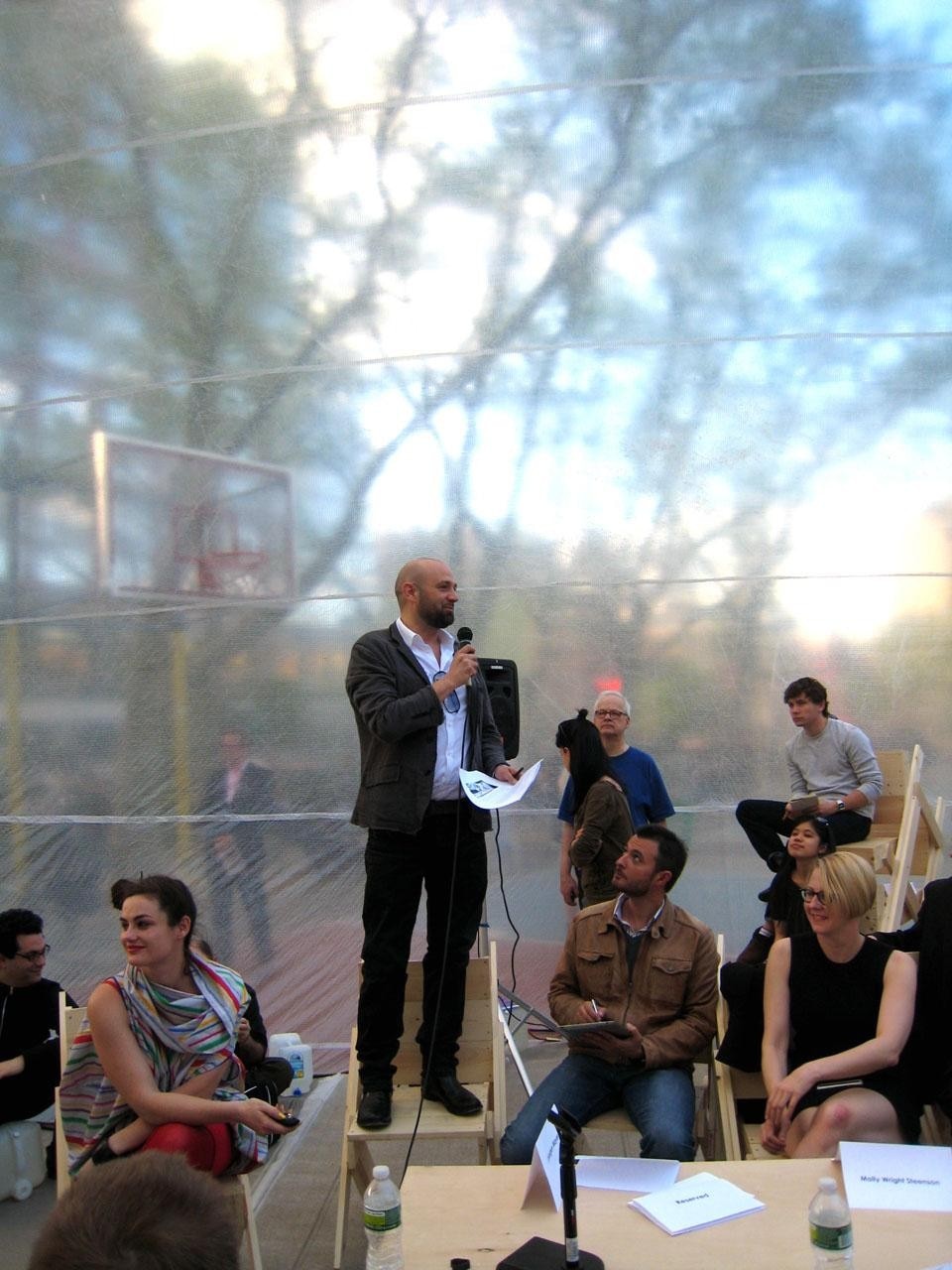
Throughout the event, the manifestoes were accompanied by projected imagery generated by a new app called DrawThinkTank. Collaboratively drawn in real-time by architecture students using a Storefront iPad platform, the app was designed especially for the event with artist Joshue Ott.
As the day's various investigations wound to a close, the Festival continued into the night by exploring the capacities of light as a design medium for public art and architecture.
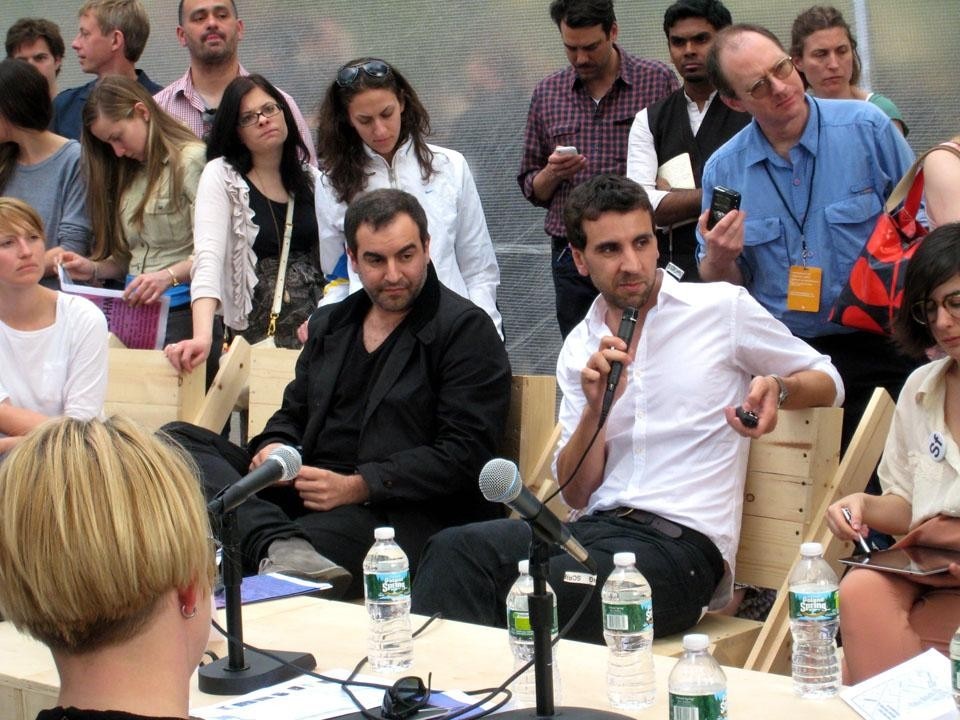
The most distinctively and ingeniously "New York" of the new series may well be the Abruzzo Bodziak project for the East Side / Turtle Bay, which finds raw materials for a fresh parti in Manhattan's zoning codes. "A maximized build-out of Manhattan…need not be bleak," reads the statement, "We see the existing city as an armature onto which the new, dispersed systems must attach and integrate." The proposal uses algorithms to analyze the difference between existing building envelopes and their maximum legal potential, à la Hugh Ferriss. Then it shows how these forgotten remainders—which are often left unexploited due to their irregular geometries—could be reclaimed with greenhouses, algae gardens, photovoltaic arrays, water collection systems, and other interstitial spaces. "The zoning rules, scripted for specificity in regards to each building and the ever-changing skyline, are not merely restrictive, but also productive, encouraging the addition of biological and technical systems that work to support the city."
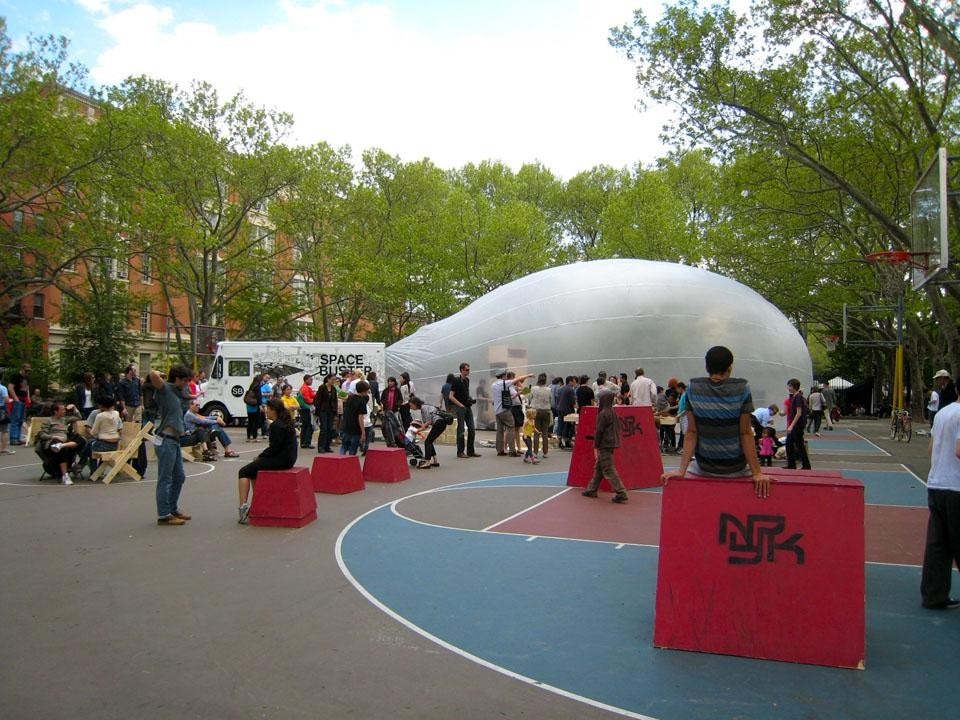
Flash:Light was a curated exhibition of light, sound, performance, and projection art that appeared suddenly at nightfall on the streets of Nolita on the final evening of the Festival of Ideas for the New City—and promptly disappeared by midnight. Curated by Nuit Blanche New York, the project had three simultaneous parts: One, a collaborative projection on the New Museum façade, which challenged the participating artists to address the SANAA-designed building's monumentality, its zig-zag silhouette, its minimalist cladding, and its role as an art museum. Part two comprised projections on the exterior and interior of St. Patrick's Old Cathedral, followed by a midnight organ program. And part three consisted of fifteen installations along one block of Mulberry Street. These latter catered directly to the pedestrian scale, creating a luminous corridor of art that played on the concept of the street festival.
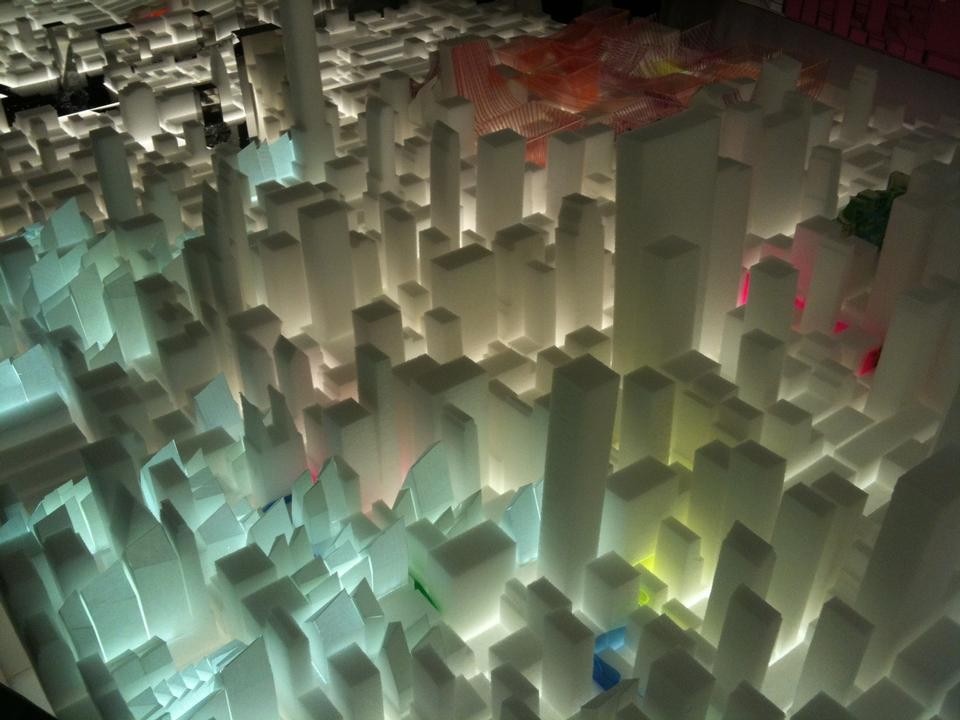
These site-specific projections begin to suggest a possible "synthesis of the arts" for the 21st century. Research on such a synthesis has gone relatively dormant since the 1950s, when figures such as André Bloc, Fernand Léger, and Le Corbusier tried with little success to reintegrate the "plastic arts." Of course the combination of architecture, sculpture, and painting has long been taken for granted in the design of theatrical stage sets. "Who can resist this threefold magic, which addresses almost all the affections and sensations known to us?" wrote the 18th-century French architect and theorist Nicolas Le Camus de Mézières, one of the first spokesmen for "effects" in architecture.
